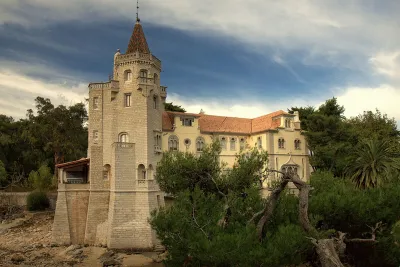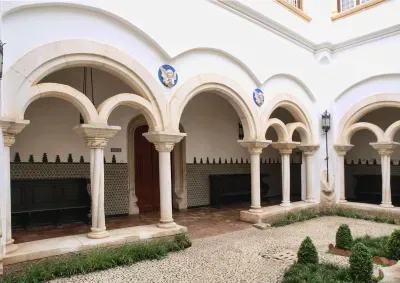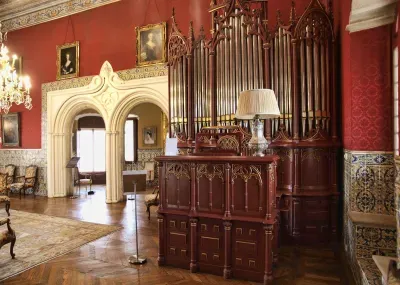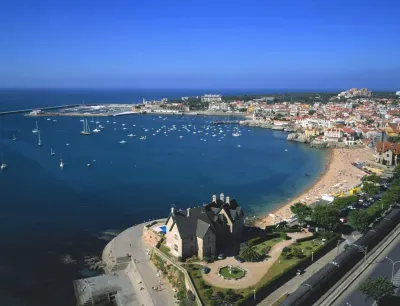
Palácio dos Condes de Castro Guimarães Joaomartinho63 CC BY-SA
Cloisters 
Museu-Biblioteca Condes de Castro Guimarães 
Museum Conde Castro Guimaraes Martin Putz CC BY-SASet within the leafy grounds of the Parque Marechal Carmona is the Museu dos Condes de Castro Guimarães - the museum / library of the counts of Castro Guimarães. The museum is housed in one of the most imposing villas in Cascais, which is also known as the Tower of São Sebastião.
This fantastic mansion by the sea is worth a visit in its own right. The house was built in the 19th century for Jorge O'Neill, the head of a Portuguese / Irish dynasty with links to the nobility. It encompasses several architectural themes the dominant of which is Revivalist. There are also hints of medieval styles and Romanticism - as was the fashion. In addition there are some Irish flourishes as a nod to O'Neill's heritage. Of course the most striking feature is the great tower, the base of which juts out into the little cove in which the villa is situated. Inside is equally flamboyant with opulent interiors, a chapel, cloisters and other features.
In 1910 the house was sold to the 1st Count of Castro Guimarães who, with his wife, lived out their years here. When he died in 1927 the count bequeathed the house and grounds to the municipality of Cascais on the condition it was turned into a public garden and museum. This was duly carried out and the Museum-Library of the Condes de Castro Guimarães was officially inaugurated on July 12th, 1931.
Over the years the museum was directed by many of the most eminent figures in Portuguese culture and the arts. People such as Carlos Bonvalot, João Couto, Branquinho da Fonseca and Maria Alice Beaumont. The most notable name who never actually became a curator of the museum was Fernando Pessoa who apparently lacked the qualifications required.
The museum itself is in essence the house along with its lavish interior. It is also the collected possessions of the Counts of Guimarães which include many fine artworks, period furniture and antiques.
Most notable amongst the collection are a neo-gothic organ, custom built for the count and the rare, sixteenth century manuscripts including the Chronicle of D. Afonso Henriques, Duarte Galvão.
Address
Avenida Rei Humberto II de ItáliaCascais2750-319Phone
214815304Link
http://www.cm-cascais.pt/equipamento/museu-condes-de-castro-guimaraes
Cascais travel guide »
At the end of one of the suburban train lines out of the capital lies Cascais. This once tiny fishing village has grown in the last century to become the elegant beach town that it is today. Visitors are no stranger to Cascais, having attracted various monarchs over the ages, a summer-dwelling artistic community in the thirties and continued to charm people both Portuguese and foreign ever since…